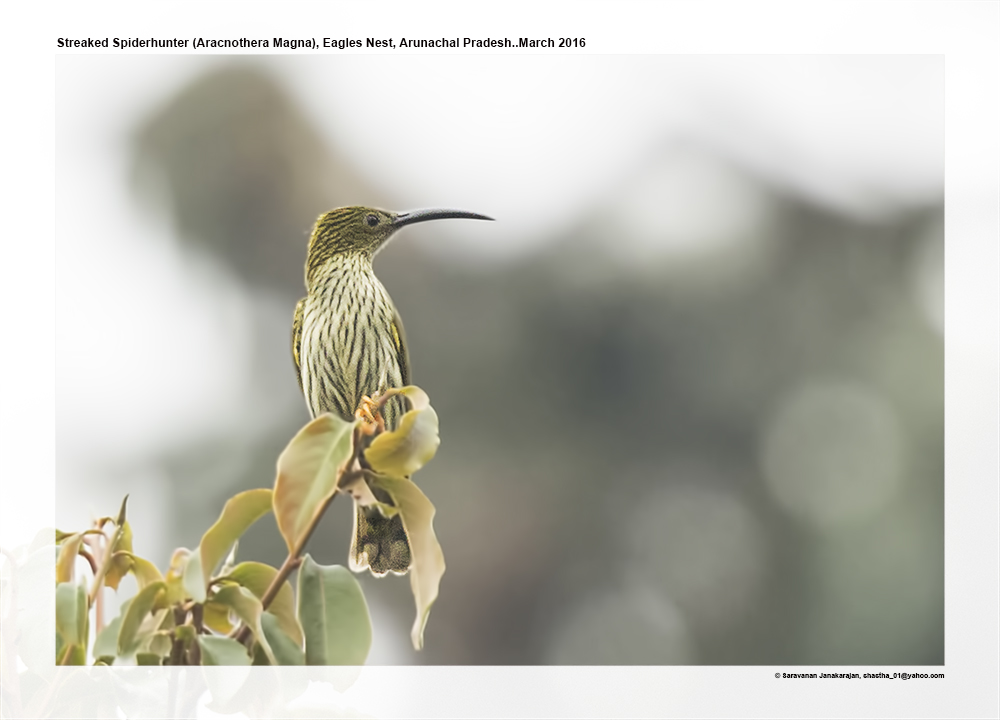Streaked Spiderhunter

Streaked Spiderhunter Arachnothera magna
Etymology:
- Arachnothera : Greek word arakhnes- spider; theras – hunter
- Magna : Latin word magnus – great
Vernacular Names :Lepcha: Dom-siriok-pho, Bhutia: Ydong-pichang
Distribution in India: Resident of Himalayas and North East of India.
Description: Size of 17–20·5 cm; wt. of male is 28–34·5g, wt. of female is 23·9 g. The nominate race is golden yellowish-olive with black streaking above, tail tipped buff and with blackish subterminal band; below, very pale yellowish-white with bold black shaft streaks, undertail-coverts are yellow or olive-yellow with bold blackish chevrons; iris is brown; bill is blackish-brown; legs are chrome-yellow to orange with pale claws. The sexes are similar. The juvenile is more buffy and greyish above and less yellow below than adult.
Habitat: It is found in secondary forests, forest edge, bamboo, scrub, thickets and gardens. It is found up 2200m.
Food habits: It eats nectar,insects, and spiders. It forages singly, sometimes in pairs; sometimes it joins mixed-species parties. It forages frequently in canopy, also at lower levels. It is removes spiders from their webs.
Breeding habits: They breed in Mar–Jul in India and Apr and Jul–Aug in Myanmar. The nest is a neat inverted dome or oblong, with one or two entrances, constructed from leaf skeletons joined together with cobwebs, lined with grass and leaf skeletons, sewn by vegetable down and cobwebs to underside of broad leaf. They lay a clutch of 2–3 eggs. The nest is parasitized by Large Hawk-cuckoo, Indian Cuckoo, Common Cuckoo and Lesser Cuckoo.